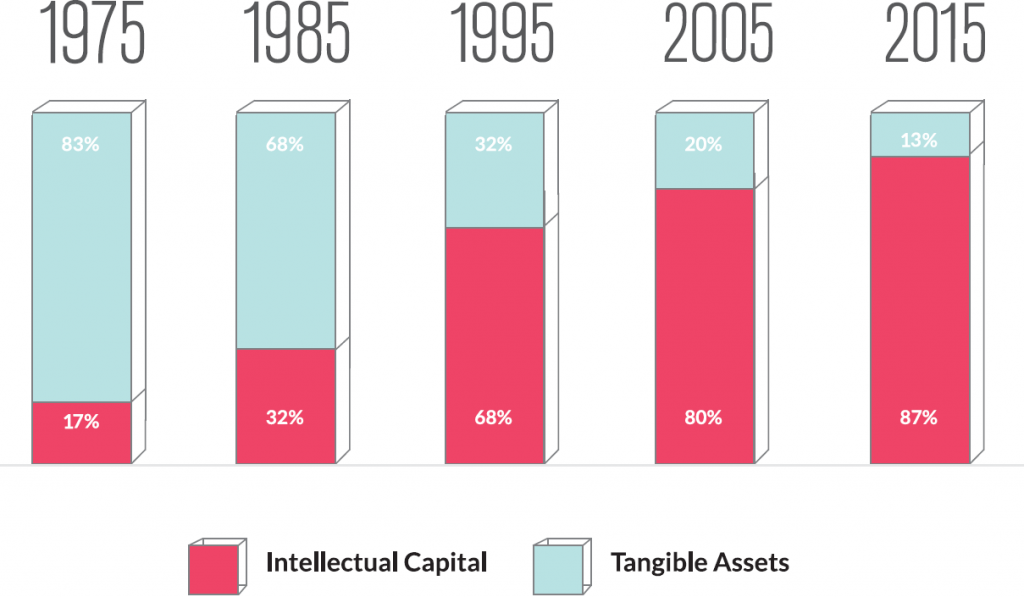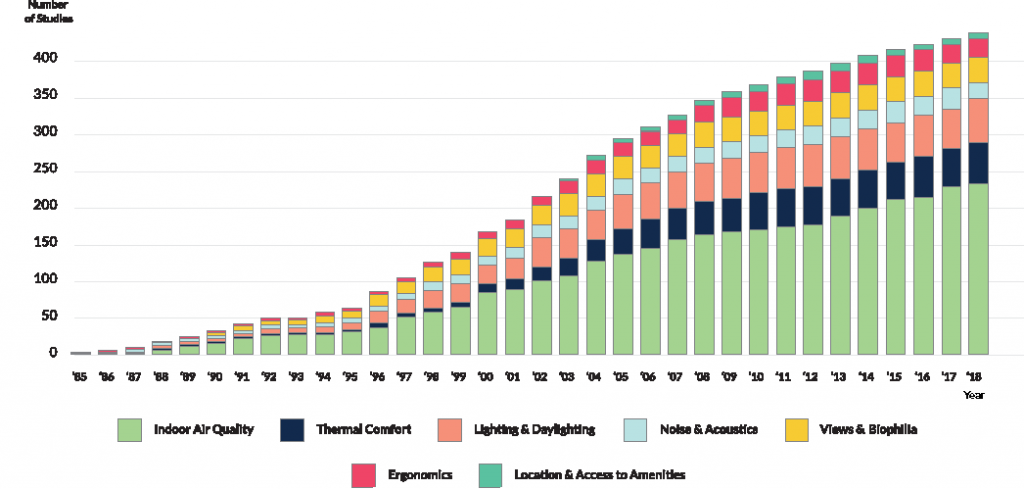THE FINANCIAL CASE FOR HIGH PERFORMANCE BUILDINGS: WHY IT MATTERS
Editor’s Note: We’re excited to share this post from our friends at stok, as well as their new report on the financial benefits of high performance buildings. Enjoy!
In a report on The Financial Case for High Performance Buildings, publicly released in October 2018, stok argues that the seemingly intangible occupant impacts of the built environment are quantifiable from a bottom line perspective. Supported by hundreds of research studies, and with insights from leading experts, this paper aims to help owner-occupants and tenants quantify the benefits of investing in High Performance Building (HPB) strategies.
Why? Because people are a company’s greatest asset, and enhancing their performance and experience at work through HPBs can produce a significant positive impact on a company’s bottom line.
THE HIDDEN HIGH PERFORMANCE BUILDING VALUE DRIVER: PEOPLE
Real estate is by far the dominant asset class globally, worth nearly 3 times the world’s GDP. At the same time, buildings account for over 40% of U.S. and E.U. energy consumption, use nearly 14% of all potable water, and create over 500 million tons of construction and demolition debris in the U.S. alone. Beyond these financial and environmental impacts, humans spend 90% of their lives indoors. With real estate at the nexus of global economics, environmental sustainability, and human health, investments in HPBs will generate multi-dimensional impact.
Traditionally, the business case for HPBs cites energy savings and increased asset value as the most appealing incentives. But another – and arguably greater – form of enhanced value creation that comes through HPBs is rarely discussed: HPBs benefit the people who occupy them, which in turn can greatly boost company profit.
When employees spend nearly 2,000 hours per year at the office, a workplace that fosters productivity, happiness, and wellness is paramount. Accordingly, employers are rapidly realizing the need for more investment in their greatest asset – their people.
We’ve seen this shift in the drivers of business value over the last 40 years. In the 1970s, the U.S. was driven by capital investment and manufacturing. Today, the foundation of the U.S. economy is services which are driven by intellectual capital rather than tangible assets. If more than 80% of a company’s value is based on its people, shouldn’t buildings be designed to optimize their performance and wellness?
THE U.S. MACRO-ECONOMIC SHIFT

Over this same period, a growing body of research contributed to by the Harvard School of Public Health, Dodge Data & Analytics, and the Center for Disease Control (CDC) , among many others, has emerged documenting the link between the built environment and human performance, satisfaction, and wellness. This impressive body of over 400 academic and industry studies inspired multiple international building certifications to focus on human health and wellness, including the WELL Building Standard, the Living Building Challenge, and LEED v4’s comprehensive materials credits, which highlight the increasing need for human-centric HPB design strategies.

KEY FINDINGS
So how can we quantify the benefits of these human-centric HPB design strategies? In the paper, stok applies financial impact calculations to findings from over 60 robust research studies on the effect of HPBs in three key occupant impact areas: Productivity, Retention, and Wellness. In short, stok’s sensitivity analysis found that a conservative estimate of 3% enhancement in productivity, 5% increase in retention, and 30% reduction in absenteeism can be realized in an HPB.
Given this, in a 150,000 square foot HPB when enhanced productivity, increased retention, and improved health are accounted for, the occupier of this space is likely to see a benefit of $3,395/employee, or $18.56/square foot annually in bottom line profit compared to conventional buildings. At a conservative $20/square foot cost premium, a company occupying an HPB can realize a Net Present Value of $17M in profit over 10 years due to improved occupant performance and experience alone.
That is clear, quantified, and impactful value that must be accounted for in the delivery of HPBs and spaces. The question is no longer “How much do HPBs cost?”; it is “How much can my company benefit by working in an HPB?”
Quantify the financial benefits of investing in people through high performance real estate.
Download the full report here.
To view the original post, visit stok’s website here.


